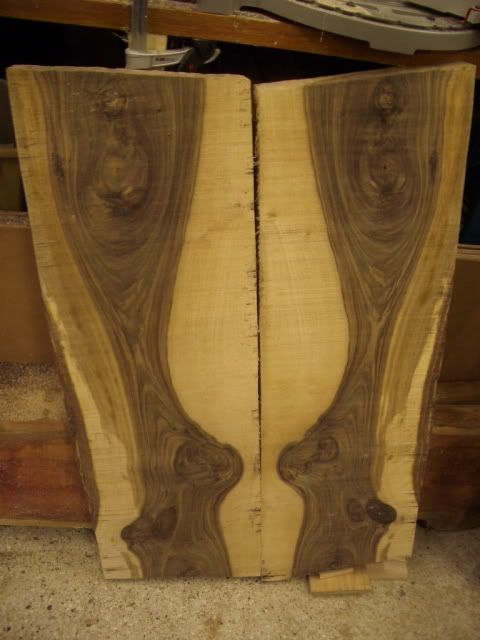shim20
Established Member
looks good, nice job

That's fair enough...if you like the lighter wood, then use it. The lighter coloured timber though in oak is sapwood, not heartwood. The light straw coloured stripe down the top of the upper shelf is sap and if you like it that's fine, but I tend to avoid it like the plague :evil: and would never knowingly include it on a very nice piece like this. If you look at any pieces from the classic Arts & Crafts movement (early Barnsley) you won't see any sapwood and it was not included for a good reason...it's the softer part of the tree where growth takes place and as such is prone to attack by all sorts of nasty, wood boring little beasties - Robcatface":augj2prx said:Hello Woodbloke,
ive used the heartwood (ie lighter colouring) when joining the boards because I like the whole range of colours and textures of the wood to come through in the finished piece. As long as there aren' t issues around different degrees of wood movement when joining the pieces, I like to use heartwood for contrast (some suggest that heartwood has a different rate of expansion/contraction compared to the rest of the tree). I guess I'm just at the other end of the scale to folk who like it all one colour, usually with a gloss finish (might as well use plastic & be done with it , eh ?) . You can see similar use of heartwood by choice on the front of my "Krenov style cupboard" (previous post). In the latter example the streaks of lighter wood assist in giving the piece a more vertical feel. But enough dribble ! I guess I just like the wood. In this bookcase the use of heartwood on the join of the shelves emphasises that each shelf is made from two distinct pieces of oak, yet the joint is very good, - you really have to lookfor it even with the colour change in the woods - and this I like. Regards, Catface.


catface":21nwttrd said:" If desired, I will show the lighter shaded "sap-wood" in cherry and walnut tabletops because of the wonderful color patterns it creates."

EdSutton":2y6k6n9a said:catface":2y6k6n9a said:" If desired, I will show the lighter shaded "sap-wood" in cherry and walnut tabletops because of the wonderful color patterns it creates."
Well I did that with this cherry table I made, where the coloration of the sapwood became an integral part of the appearance of the top.

catface":1275cevp said:Hello miles_hot,
2) can the excellent arrangement you have for clamping the shelves together (and useful for table tops I imagine) can disassembled or does it remain up all the time (and thus take up wall space)?
THe clamping arrangement I have stays up all the time. Currently it has 2 mounting rails which the clamps secure to at their tops, giving a run of 2 meters length. Plano suggest the clamp mounting rails screw onto a piece of 2 by 4 or similar, but wanting to avoid my clamp changing shape with the humidity of different seasons, I had a local blacksmith make me up a 2M by 1M box section steel frame & the clamp rails mount onto this. This way I know, having screwed the frame to the wall & shimmed it flat, that what comes out of the clamps will be flat.
The steel support frame & clamps are up all the time, but you can shove the clamps all up one end, where they occupy about 50cm of the rail.
Hope this answers your questions, regards, Catface
woodbloke":17f5hf1u said:I keep on banging on about using sapwood and as I said it's not something that I would ever knowingly use on a really good piece. The reason is that sap will be attacked by wood borers under the right conditions. These are in environments that are cool and possibly with more moisture in the air ie, properties without central heating. In modern houses with decent heating (which most of us have these days) the attack of the bugs ain't going to happen. However, all of us aspire (well I do anyway) to build heirloom type stuff that will hopefully outlast me and several generations down the line. The question is, how can you predict the environment where your furniture will be used in 2109 or even 2209? Simple answer, of course, is that you can't so why take the risk when it's just as easy to use the timber without the sap and give your piece a fighting chance of staying together...which is as I said earlier is the reason that the great makers years ago wouldn't have dreamed of using it their pieces - Rob